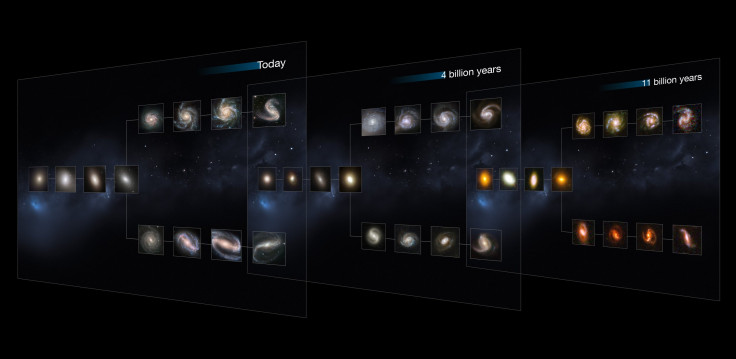Hubble Looks Back In Time To See How Galaxies Really Were 11 Billion Years Ago
The Hubble Space Telescope was able to look at the origins of modern galaxies, going as far back as 11 billion years, to see if these ancient galaxies looked anything like the galaxies we see today. It turns out galaxies age quite well as modern galaxies bear a strong resemblance to ancient ones, proving the Hubble Sequence was in place 2.5 billion years further back in time than previously believed.

The Hubble Sequence identifies and classifies galaxies based on morphology, visual appearance, and star-forming activity. The sequence breaks down galaxies into three types: elliptical, lenticular and spiral, based on their various properties. There are also irregular galaxies that do not fit into the Hubble Sequence.
Hubble’s Cosmic Assembly Near-infrared Deep Extragalactic Legacy Survey (CANDELS) allowed astronomers to observe galaxies in the distant universe. These galaxies were nearly 11 billion years old, and researchers wanted to know if the Hubble Sequence could be applied to ancient galaxies.
Previous research determined the Hubble Sequence was accurate as far back as 8 billion years ago, and CANDELS confirmed the sequence is accurate as far back as 11 billion years ago. Lead author BoMee Lee, from the University of Massachusetts, wanted to know when the Hubble Sequence was formed, and at what point in the universe’s past the sequence no longer be applies. “To do this you need to peer at distant galaxies and compare them to their closer relatives, to see if they too can be described in the same way,” said Lee in a statement.
The galaxies observed in Hubble's CANDELS cover 80 percent of the universe's history. Current estimates state the universe is approximately 13.77 billion years old, and much like today, ancient galaxies easily fit into the different classifications as laid out in the Hubble Sequence. In the past, there were spiral galaxies like our Milky Way galaxy, with distinct barred arms; elliptical galaxies that contain older stars and have a round, fuzzy shape; and lenticular galaxies that fall somewhere between the two other types of galaxies.
Co-author Arjen van der Wel, from the Max Planck Institute for Astronomy in Heidelberg, Germany, said the maturity of the galaxies were surprising, contradicting the predictions of galaxy formation models. The observations determined there were two prevalent types of galaxies in the early universe, blue galaxies containing young stars with plenty of star-forming activity, and red galaxies that lack star-forming activity. Another research project using CANDELS determined that the visual appearance of a galaxy was the last thing to form, but the properties allowing for a galaxy to fit into the Hubble Sequence were established at an earlier date. "The Hubble Sequence underpins a lot of what we know about how galaxies form and evolve -- finding it to be in place this far back is a significant discovery," Lee said.
Hubble's Wide Field Camera 3 let researchers observe the galaxies in infrared light; previously, only visible light observations were possible. Visible light helped reveal the star-formation activity of these galaxies but little else, while infrared light allowed for more accurate observations of the galaxy's shape.
© Copyright IBTimes 2024. All rights reserved.






















